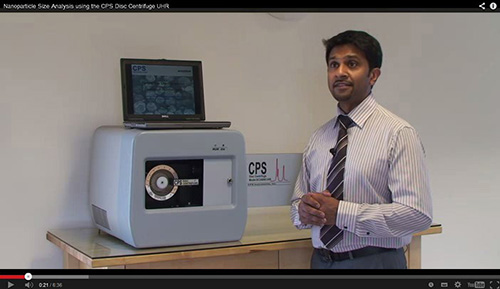Analytik reports on how the Food & Environment Research Agency used the CPS Disc Centrifuge analyser to study engineered nanoparticles
 Analytik reports on how the Food & Environment Research Agency used the CPS Disc Centrifuge analyser to study engineered nanoparticles
Analytik reports on how the Food & Environment Research Agency used the CPS Disc Centrifuge analyser to study engineered nanoparticles
Cambridge, UK, 18th February 2014: Analytik, leading suppliers of innovative analytical instrumentation to the UK and Ireland, reports on the work of the Food & Environment Research Agency where they have carried out studies on engineered nanoparticles using various particle sizing techniques, notably differential centrifugal sedimentation analysis.
The Food and Environment Research Agency (Fera) is an Executive Agency of the Department for Environment, Food and Rural Affairs (Defra). One of its areas of responsibility is research and assurance. This service provides robust scientific evidence, rigorous analysis and professional advice to the Government, international organisations and the private sector.
Agnieszka Dudkiewicz worked as a member of Dr Qasim Chaudhry’s team studying engineered nanoparticles (ENPs). Many analytical methods are available these days to measure ENPs based on different principles and produce different types of measurement. This means that particle size distributions measured by different methods cannot be compared unless ENPs are ideally spherical (because measurement principles assume spherical particles and/or instruments are calibrated using spheres). For this reason, currently there are no ENP reference materials available with a broad size distribution. The aim of the Fera study was the development of a uniform measurement expression, which would allow comparison of measurement outputs from different techniques for ENPs with broad size distributions and non-spherical shape. In the study, various techniques including Differential Centrifugal Sedimentation (DCS) along with Nanoparticle Tracking Analysis (NTA), Field Flow Fractionation with Inductively Coupled Plasma detection (FFF-ICP-MS), Electron Microscopy (EM) and Gas-phase Electrophoretic Mobility Molecular Analysis (GEMMA) were trialled.
Ms Dudkiewicz described why the group opted to use the CPS system for this program. “We chose DCS as one of the research techniques because of its superior resolution in terms of the measurement of particles with polymodal particle size distribution when compared to other techniques. The CPS Disc Centrifuge analyser also demonstrated excellent measurement repeatability. We also thought it would be suitable for the measurement of non-spherical ENPs and making comparative measurements with other techniques because of the possibility of particle size correction using effective density. Literature evidence also showed that Differential Centrifugal Sedimentation might be one of the techniques giving an accurate particle size distribution for polydisperse samples. In cited studies, researchers showed that proportions of the particles in polymodal distribution measured by the CPS system were in best agreement with the expected dispersion. We also found that the CPS Disc Centrifuge analyser was user friendly and did not require extensive sample preparation and run times.”
To learn more about the CPS Disc Centrifuge UHR analyser for nanoparticle characterisation, please visit www.analytik.co.uk/product/nanoparticle-size-analysis-cps-disc-centrifuge-uhr/.


